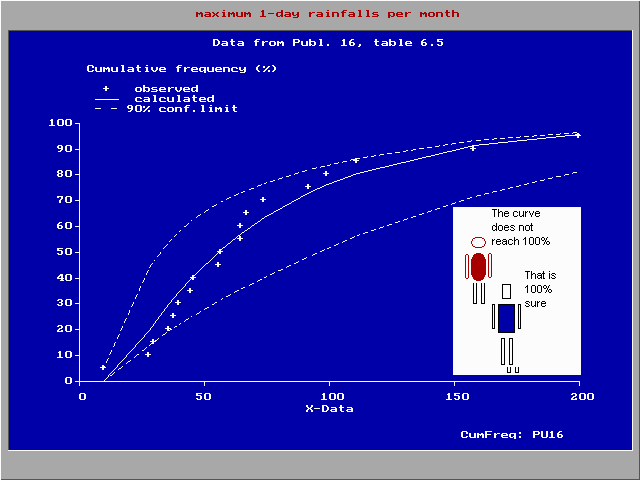DRAINAGE RESEARCH IN FARMERS' FIELDS: ANALYSIS OF
DATA
This paper is about the analysis of agricultural
drainage data. First it deals with frequncy analysis
to judge how often certain magnitudes occur and
how important they are. Secondly, it explains how to
determine relations between important parameters and
to what extent there is mutually a strong influence
or not. To this end various types of regression
analysis are used, including regression in segments.
Finally drainage models and
irrigation-rainfall-discharge interactions are
reviewed.
TABLE OF CONTENTS
1. Analysis of data
1.1 Types of analysis
1.2 Parameters
2. Standard statistical analysis
2.1 Frequency analysis
Means and standard deviations
Cumulative frequencies of crop yield
Cumulative frequencies of water-table depth
Cumulative frequencies of soil salinity
Cumulative and interval frequencies of hydraulic
conductivity
Cumulative frequencies of rainfall
Cumulative frequencies of river discharge
Cumulative frequencies of drain discharge
Missing data
Outliers
2.2 Time-series analysis
Time series (hydrograph) of drain discharge
Time series (hydrograph) of water-table
depth
Frequency distribution in two sub-periods and mass
method
2.3 Testing of differences
2.4 Spatial differences
2.5 Correlation analysis
3. Conceptual statistical analysis
3.1 Linear regression, ratio method
3.2 Linear regression, least squares method
Linear relation between drain discharge and level of
the water table
Non-linear relation between drain discharge and
water table
Linear relation between crop production and depth of
water table
3.3 Intermediate regression
3.4 Segmented two-variable linear regression
Non-linear relation between water level and time
Non-linear relation between crop production and soil
salinity
Non-linear relation between crop production and
irrigation
Non-linear relation between crop production water
table
3.5 Segmented three-variable linear regression
4. Conceptual deterministic analysis
4.1 Introduction
4.2 Transient recharge-discharge relations
References
|
Click below
for
category
selection
Software
& models
Articles
& manuals
Reports &
case sudies
FAQ's
& papers
Home
page
|
|
